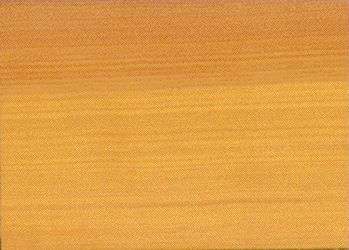
White alder (Platylophus trifoliatus)
Family: Cunoniaceae
Common names: White alder, White els, Witels, Witte els
Distributed in: South Africa (Africa)
Common uses: Agricultural implements, Boat building (general), Boxes and crates, Broom handles, Cabinetmaking, Furniture, Joinery, Light construction, Mine timbers, Moldings, Paneling, Plywood, Posts, Railroad ties, Sporting Goods, Tool handles, Toys, Turnery
Tree size: Tree height is 20-30 m
Colors: the heart isPale red to pink, Yellow to golden-yellow to orangeand the sapwoodPaler than heartwood
.The grain isWeak figure, the textureMedium
Natural durability: Susceptible to attack from termites (Isoptera), Susceptible to insect attack
Kiln Schedules: UK=A US=T2D4/T2D3 Fr=1
Kiln Drying Rate: Very slow (>28 days for boards < 32 mm, to >84 days for boards >= 63 mm)
Drying Defects: Moderate collapse and honeycombing
Ease of Drying: Difficult
Cutting Resistance: Cutting Resistance with green wood is easy
Gluing: Easy to glue
Mortising: Easy to mortise
Moulding: Easy to mould
Movement in Service: Easy to mould
Nailing: Easy to nail
Planing: Easy to plane
Resistance to Impregnation: Heartwood is extremely resistant
Response to hand tools: Easy to machine
Turning: Turns with moderate ease
Painting: Fair to Good; Polishing: Fair to Good; Varnishing: Fairly Easy to Very Easy;
- Numerical data Metric
- Numerical data English
- Strength properties
- References
 |
 |
 |
 |
| Item |
Green |
Dry |
Metric |
| Specific Gravity |
|
|
|
| Density |
|
528 |
kg/m3 |
| Bending Strength |
429 |
674 |
kg/cm2 |
| Crushing Strength |
275 |
449 |
kg/cm2 |
| Hardness |
|
451 |
kg |
| Impact Strength |
|
|
cm |
| Shearing Strength |
|
62 |
kg/cm2 |
| Stiffness |
71 |
84 |
1000 kg/cm2 |
| Tangential Shrinkage |
|
|
% |
| Radial Shrinkage |
6 |
|
% |
| Weight |
512 |
400 |
kg/m3 |
| Maximum Load |
|
|
cm-kg/cm3 |
| Toughness |
|
|
cm-kg |
| Static Bending |
|
|
kg/cm2 |
|
 |  |  |  | | Item | Green | Dry | English | | Bending Strength | 6111 | 9589 | psi | | Density | | 33 | lbs/ft3 | | Hardness | | 995 | lbs | | Maximum Crushing Strength | 3916 | 6397 | psi | | Shearing Strength | | 882 | psi | | Stiffness | 1017 | 1199 | 1000 psi | | Weight | 32 | 25 | lbs/ft3 | | Radial Shrinkage | 6 | | % | | Tangential Shrinkage | 9 | | % | |
Density (dry weight) = 31-37 lbs/cu. ft. 1
Density (dry weight) = 38-45 lbs/cu. ft.
Max. crushing strength = medium
Bending strength (MOR) = low
Shrinkage, Tangential = large
Shrinkage, Radial = large
Shearing strength (parallel to grain) = very low
Modulus of Elasticity (stiffness) = very low
Hardness (side grain) = soft
Density (dry weight) = 23-30 lbs/cu. ft.
Shrinkage, Tangential = fairly large
Shrinkage, Radial = fairly large
Banks, C.H., Schoeman, J.P., Otto, K.P.,1977,The Mechanical Properties of Timbers with particular reference to South,Africa,South African Forestry Research Institute Bulletin,(Ed.,Schoeman, J.P. 1973 & Otto K.P. 1976,No.48Banks, C.H.,1954,The Mechanical Properties of Timbers with Particular Reference to those,grown in the Union of South Africa,Journal of the South African Forestry Association,No. 24 pp.44-65,[South,African Forestry Journal]Banks, C.H.,1970,The Durability of South African Wood and Wood Base Building Materials,South African Forestry Journal,No.75Bolza, E., Keating, W.G.,1972,African Timbers - the Properties, Uses and Characteristics of 700 Species,C.S.I.R.O. Div. of Building ResearchChalk, L. et al.,1935,Fifteen South African High Forest Timber Trees,Forest Trees and Timbers of the British Empire, Imperial Forestry,Institute, Oxford,Part 3Scott, M.H.,1935,Weights of South African Growth Timbers,South African Department of Agriculture and Forestry Bulletin,No.145,Forest Products Institute, Forestry Series No.1Scott, M.H.,1953,Utilisation Notes on South African Timbers,South African Forestry Department Bulletin No.36Sim, T.R.,1921,Native Trees of South Africa,Union of South Africa Department of Mines and Industries Memoir No.3Takahashi, A.,1978,Compilation of Data on the Mechanical Properties of Foreign Woods (Part,III) Africa,Shimane University, Japan, Research Report on Foreign Wood No. 7
|








